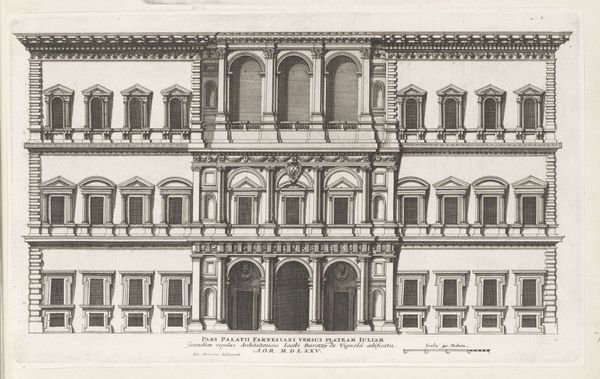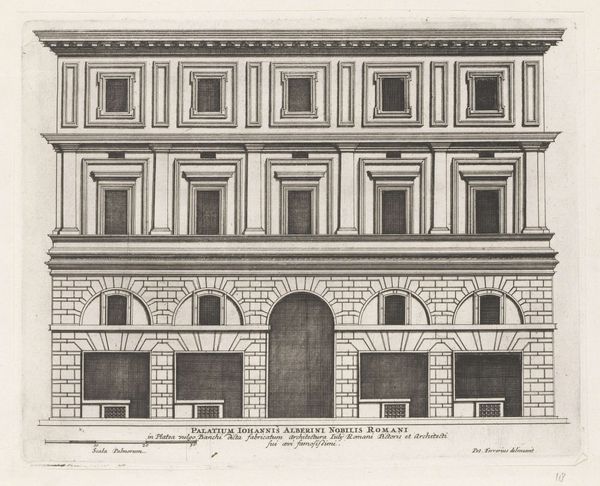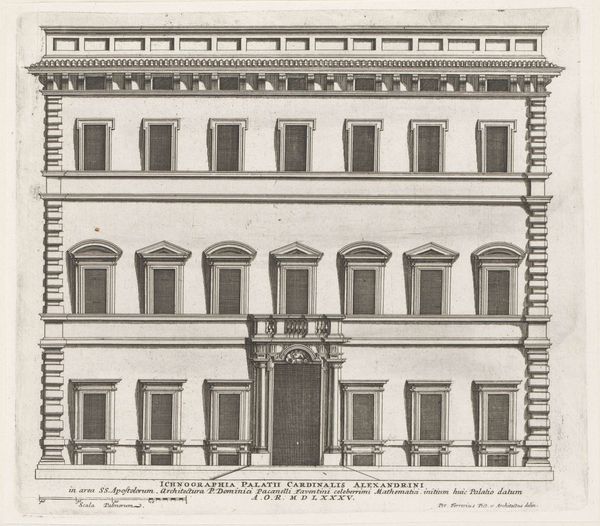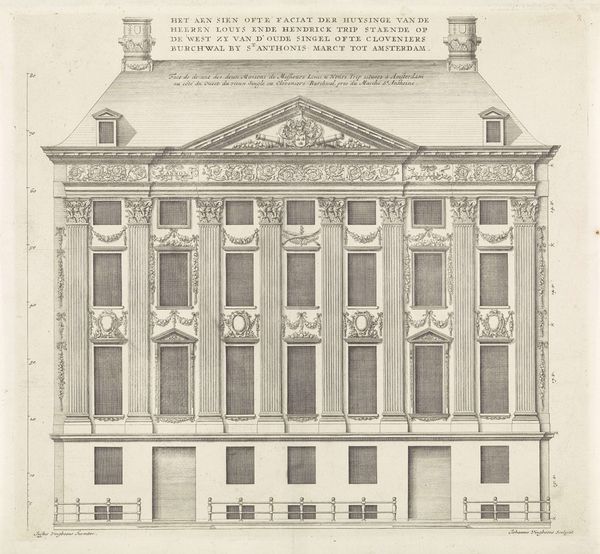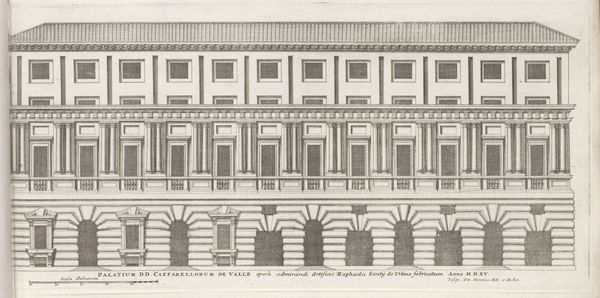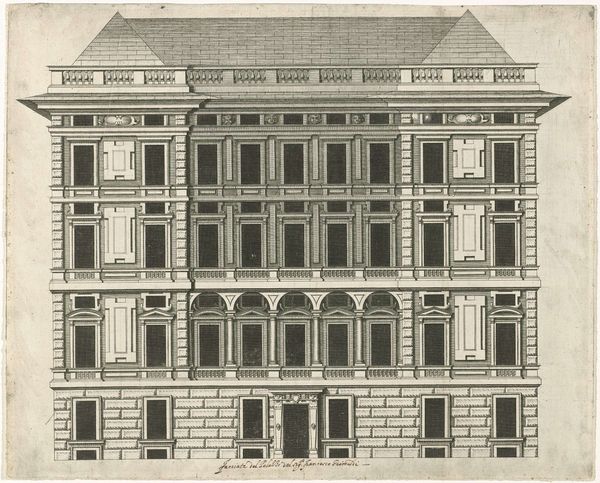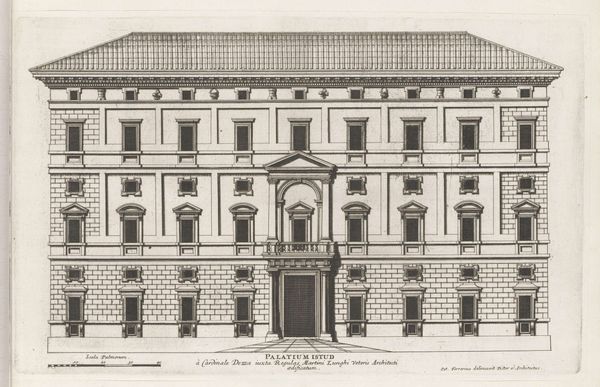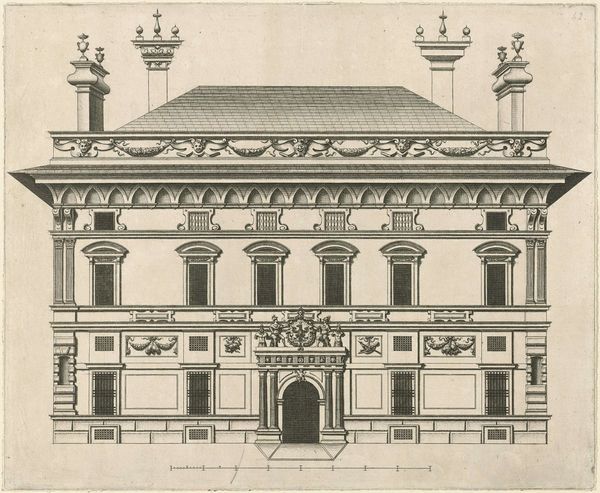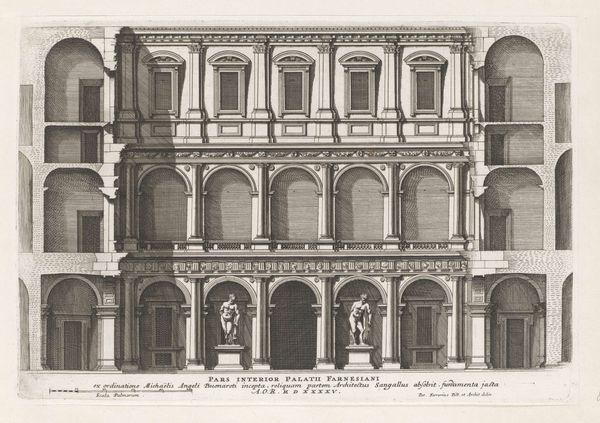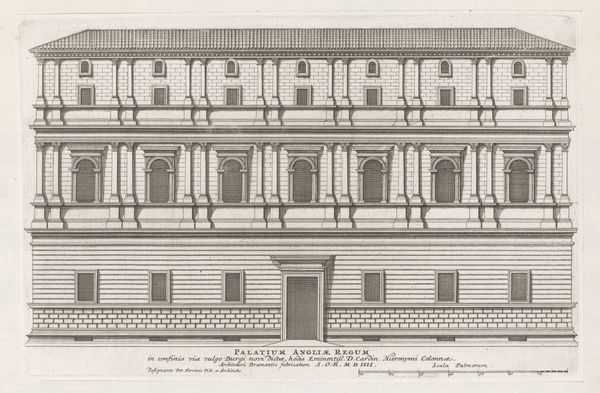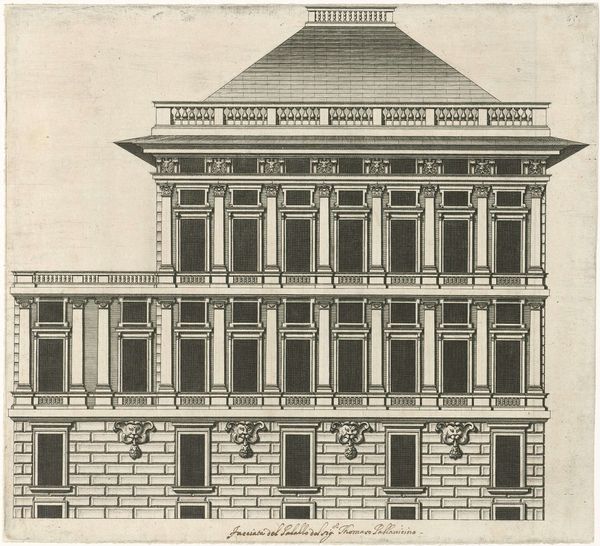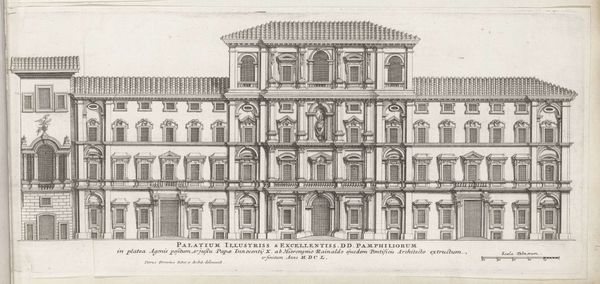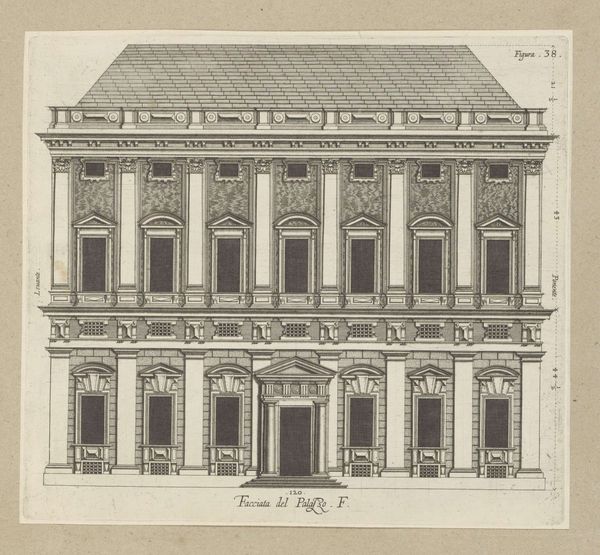
print, engraving, architecture
#
baroque
# print
#
cityscape
#
history-painting
#
engraving
#
architecture
#
building
Dimensions: height 249 mm, width 297 mm
Copyright: Rijks Museum: Open Domain
This is Giovanni Battista Falda's etching of the Façade van Palazzo Branconio dell'Aquila in Rome. Falda, working in the late 17th century, captured the architectural styles prevalent during the late Renaissance and early Baroque periods. The image itself isn't just a neutral record. It's a statement about power, wealth, and the role of art in society. The Palazzo, designed by Raphael, embodies the aspirations of the Roman elite. Falda's print makes the Palazzo accessible as an object of study and admiration. Consider the social context: Rome was a city of immense cultural and political importance. Buildings such as these were visual symbols of power and heritage. Prints like Falda’s helped disseminate these images, shaping architectural trends and ideas about taste across Europe. To fully understand this print, we might look at period architectural treatises, social histories of Rome, and biographies of the artists and patrons involved. These resources help reveal the complex interplay of art, power, and society in 17th-century Italy.
Comments
No comments
Be the first to comment and join the conversation on the ultimate creative platform.
